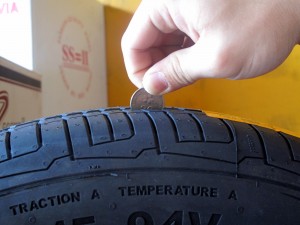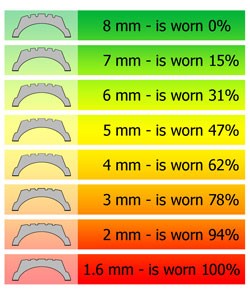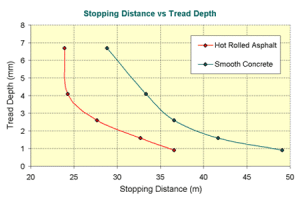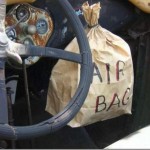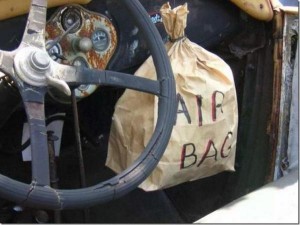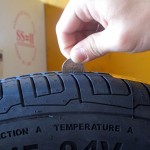
In these frugal times hard-pressed folks are constantly on the lookout for savings and value. However, saving money does not always equate to getting good value.
Some products; the sort that keep you from the cold hard ground for example, should not be skimped on. Shoes and beds for example are important enough to by new. Tyres are arguably even more important in that regard.
And yet a permissive attitude towards second hand tyres prevails in Ireland, one that suggests they somehow represent good value for money. This is patently not true. Not only is this practice a false economy. The attitude that accompanies it is misinformed and dangerous.
Second Hand Tyres – Why The Hell Not?
Firstly, we need to understand that the tyre industry in Ireland is so badly regulated that anyone can simply open and trade. No training is required. No knowledge is needed. You can even get a government grant to help you on your way. The result of this barely regulated approach? Vendors of second hand tyres sold in Ireland are not legally bound to test for possible dangers.
Compare this with Germany. Clearly defined and enforced laws, coupled with two contrasting seasons requiring two sets of tyres has created a culture whereby drivers will not accept second hand tyres. These tyres, and others from European countries with similarly strict regulations, are often unloaded onto us Irish due to our permissive attitudes and willingness to but second hand.
The dangers were starkly reflected in a 2012 report which revealed that 51 percent of second-hand tyres were dangerous or deemed not fit for purpose. That same report also revealed that 55 percent would warrant an NCT ‘advisory warning’. The report found that, in most cases, the tyres had been used by central and northern European motorists where conditions are considerably harsher. The Road Safety Authority backed the report and advised motorists against buying second hand tyres.
In October of this year AA Rescue issued a statement which claimed that there has been a surge in callouts for blowouts due to the fact that many motorists were “driving on tyres so worn out that they were bound to burst”. They estimated that as many as one in 10 drivers had experienced a blowout in the past four years, while a survey of 16,000 motorists showed that more than half regularly encounter tyre debris on roads.
Minimum Tyre Tread Depth / Worn Tyre Gauge
Most drivers don’t even know the legal limit for minimum tread depth on tyres. While the legal-limit is 1.6mm, the general consensus is that thread depth should be checked frequently once it reaches 3mm, and replaced when it wears below 2mm (especially during autumn and winter months).
In terms of the savings garnered from purchasing second hand tyres, the reality is that they are merely short term. The rapid deterioration of stopping distance after a tyre has reached a minimum tread of 3mm means is stark.
A typical part-worn tyre has between 2-3mm of tread remaining, due to the fact that tyres must be legally changed in France and Germany once they reach that minimum. The undisputed fact is that these part-worn tyres won’t last for long – maybe somewhere in the region of 3000-4000 miles – before they are deemed illegal here.
So where does attempting to save a little bit of money leave you? It potentially leaves you with three penalty points on your license. That could be considered getting off lightly, because your chances of crashing on a wet road if you are forced to brake suddenly are increased significantly.
In most of the cases, used car tyres are actually overpriced. If a typical second hand tyre has 3mm depth, that equates to just 1.4mm of usage before it must be legally binned. Now if such a tyre is generally priced between €30 and €40 it would need to outperform a new tyre to be considered good value. However, a €120 euro new tyre with a thread depth of 8mm will last at least four times as long as one with 3mm. And that’s without even factoring in the need to pay for the fitting of four tyres in the case of second hand purchases. In other words, there is no saving to be had.
Consumers buy them believing they are getting a good deal, when in reality they don’t know their usage history and can’t see any internal damage. New car tyres on the other hand are proven to handle significantly better, have passed rigorous and heavily regulated safety checks and let you enjoy a better ride. You’re not only buying new tyres – you’re buying safety and peace of mind.

